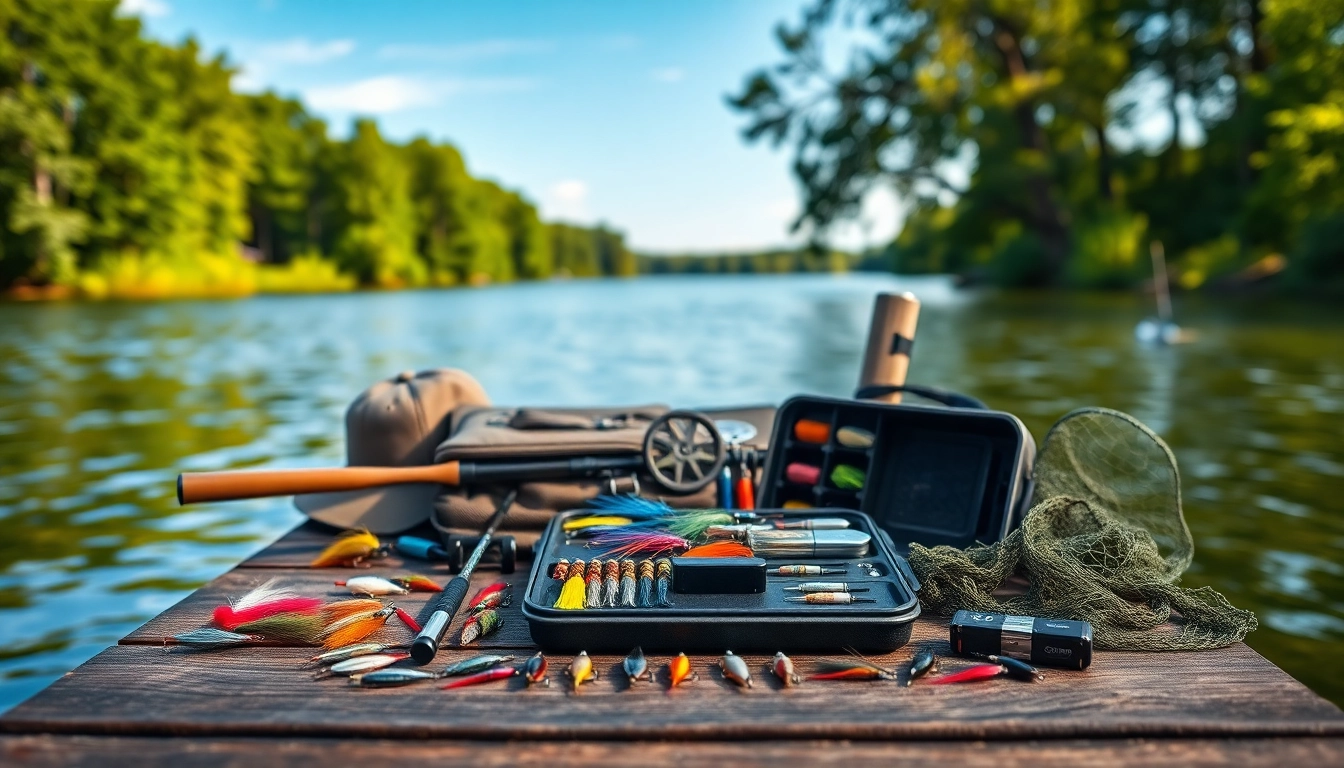Understanding the Fly Fishing Kit Basics
For anyone interested in the peaceful and fulfilling sport of fly fishing, having the right gear can make all the difference between a frustrating day on the water and a successful outing. A well-organized Fly fishing kit is essential for both beginners and seasoned anglers alike. This guide will explore the fundamental aspects of fly fishing kits, including what they include, their benefits, and how to choose the right size for your needs.
What is Included in a Fly Fishing Kit?
A standard fly fishing kit typically includes several key components that are necessary for any successful fishing trip. These often encompass:
- Fly Rod: The primary tool for casting your fly. Rods vary in length, weight, and action, influencing casting distance and precision.
- Fly Reel: The mechanism where your line is stored, allowing you to manage the line and catch fish effectively.
- Fly Line: This specialized line is designed to cast flies. It often comes in different weight categories to match the rod.
- Leader Line: A clear fishing line that connects the fly line to the fly itself, usually made of monofilament or fluorocarbon.
- Flies: Artificial lures that imitate insects or other food sources. Kits typically include a variety of flies to cover different fishing conditions.
- Accessories: Items like tippet material, a fly box, and sometimes waders or a fishing vest are also included, depending on the kit.
Benefits of Choosing a Complete Fly Fishing Kit
Investing in a complete fly fishing kit offers numerous advantages:
- Convenience: Kits come with all necessary components, saving you the hassle of purchasing each item separately.
- Cost-Effectiveness: Bundled kits often provide a better value compared to buying items individually.
- Compatibility: Components are designed to work together, minimizing the risk of mismatched gear.
- Time-Saving: Kits enable beginners to quickly start fishing without extensive research.
Choosing the Right Size for Your Fly Fishing Kit
The right size for your fly fishing kit depends on several factors, including your target species, fishing location, and personal preferences. Understanding the weight and length of the rod is crucial, as these will affect your casting technique and overall fishing effectiveness. As a beginner, opting for a medium-action rod between 8 to 9 feet is generally a safe choice for freshwater fishing, providing versatility and ease of use.
Key Components of the Ideal Fly Fishing Kit
Rods and Reels: What You Need to Know
When it comes to fly fishing, the rod and reel are the most significant components of your kit. Selecting the right combination can greatly enhance your fishing experience:
- Rod Action: The action of the rod describes its flexibility. Fast action rods bend only at the tip, providing quick responsiveness, while slow action rods bend more throughout their length, offering better control for beginners.
- Reel Size: Ensure the reel is compatible with the weight of the rod and line. A well-balanced setup will lead to improved casting distance and accuracy.
- Material Considerations: Rods can be made from graphite, fiberglass, or a composite. Graphite is lightweight and sensitive, while fiberglass offers durability and is often more forgiving for beginners.
Flies and Tackle: Essential Items Explained
Flies are not just random hooks—each type serves а specific purpose. Dry flies float on the water’s surface, while wet flies sink to imitate underwater creatures. Your tackle should also include tippet material and split shot weights when necessary, all of which are essential for effective casting.
Accessories to Enhance Your Fly Fishing Kit
A complete kit often includes numerous accessories that enhance your fishing experience:
- Fly Box: A secure storage solution for your flies, allowing organization by type or size.
- Waders: Essential for those who want to fish in deeper waters. Neoprene or breathable options are available based on seasons.
- Landing Net: Helps in safely catching and releasing fish without causing harm.
- Tackle Bags: These allow for organized transportation of your gear.
Choosing the Right Fly Fishing Kit for Beginners
Factors to Consider When Selecting Your Kit
For beginners, selecting the right fly fishing kit can seem daunting, but focusing on a few key factors can simplify the process:
- Target Species: Determine what fish you want to catch, as this will dictate the rod weight and line type.
- Environment: Consider whether you’ll be fishing in freshwater, saltwater, rivers, or lakes.
- Your Budget: Kits vary widely in price; set a budget and explore options within it.
Cost-Effective Options for New Anglers
It’s possible to find economical fly fishing kits without sacrificing quality. Look for packages that include a rod, reel, line, and flies—all the essentials to get started without overwhelming costs. Participate in local fishing groups or forums, as often, experienced anglers can provide recommendations on budget-friendly kits.
Getting the Best Value for Your Money
To ensure you’re receiving the best value, compare features across different kits. Investigate warranties and return policies. A well-made kit can be an investment in your fishing future, ensuring that your equipment lasts and enhances your experience over time.
Best Practices for Maintaining Your Fly Fishing Kit
Cleaning and Storing Your Fishing Gear
Proper care extends the lifespan of your fly fishing gear. After each use, take time to rinse your rod and reel in freshwater, particularly if you’ve fished in saltwater. Store your gear in a dry place, ideally in a protective case, to prevent damage from moisture or sunlight.
Regular Maintenance Tips for Longevity
Perform regular checks to ensure that your line is not fraying, your reel is functioning smoothly, and that your rod components are intact. Replace any damaged parts immediately to avoid larger issues that could arise during a fishing trip.
How to Organize Your Fly Fishing Kit Effectively
Organization can significantly enhance efficiency when you’re on the water:
- Fly Boxes: Sort your flies by type or size for quick access.
- Tackle Bag: Designate pockets for specific items like leaders, tippets, and tools.
- Labeling: Use labels for compartments to quickly identify gear.
Advanced Features to Look for in a Fly Fishing Kit
Upgrading Your Kit: When and How
As you become more experienced, consider upgrading your kit to better suit your advanced techniques and preferences. A lightweight rod, for example, may enhance your casting speed and reduce fatigue over long fishing days.
Innovative Features to Consider
Innovations like quick-release reels, advanced line technology, and ergonomic designs are valuable features to explore as you upgrade your equipment. These advancements not only improve performance but also contribute to a more comfortable fishing experience.
Customizing Your Fly Fishing Kit for Specific Needs
For the dedicated angler, customizing your fly fishing kit according to specific fishing environments or target species can yield incredible results. This could mean incorporating specialized flies or counterweight systems optimized for particular conditions.



